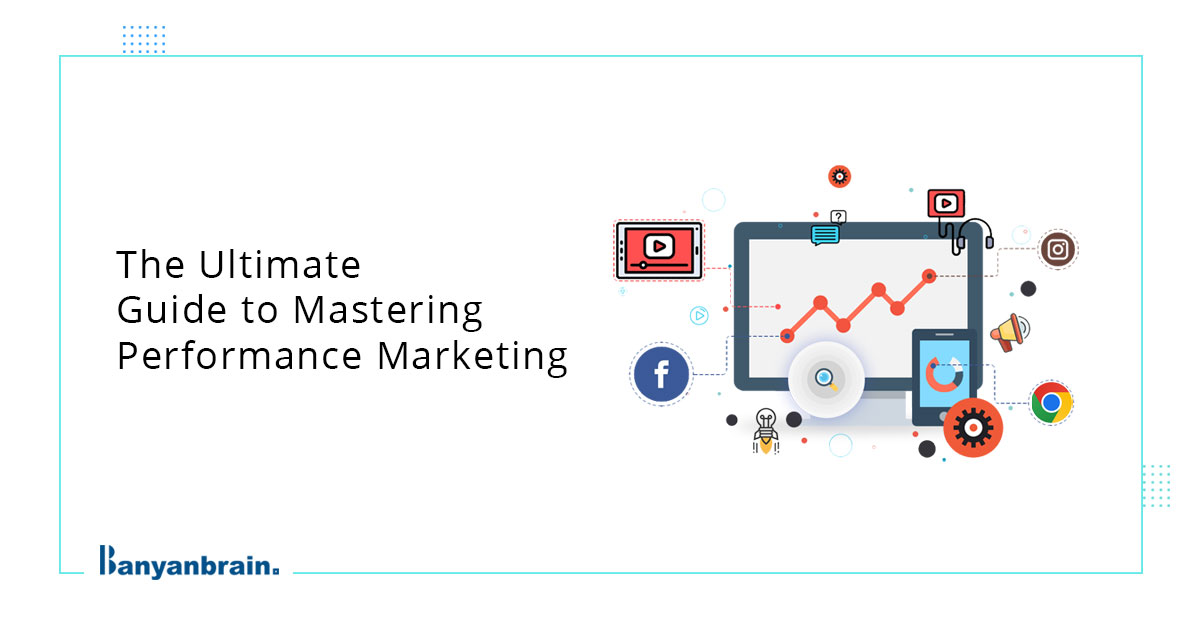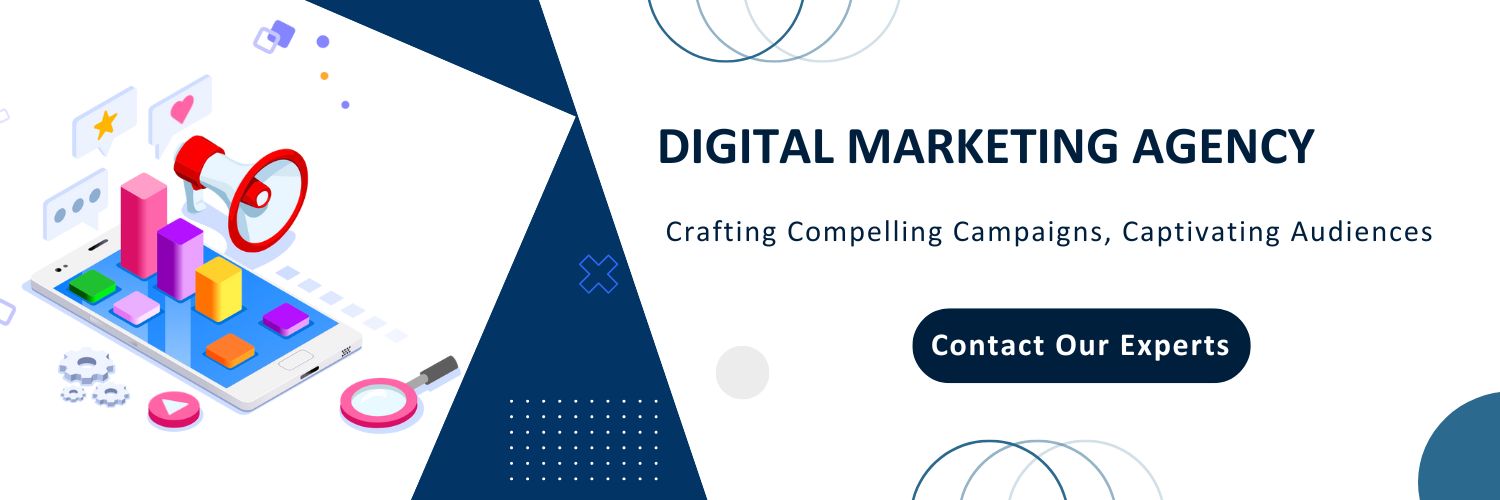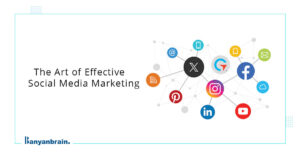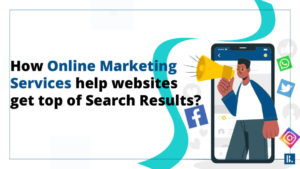Traditional marketing, also called offline marketing, uses marketing strategies that existed before the internet. This type of marketing uses traditional methods to promote goods and services, often including magazines, radio, and TV. If we talk about performance marketing, also known as performance-based marketing, it is a general term for digital advertising and marketing campaigns that follow a results-oriented approach.
While digital marketing is relatively new, traditional marketing has been developing for a long time. Each has advantages and disadvantages; thus, both are beneficial in different ways. In this blog, we will discuss a complete guide on the key components of performance marketing and why it is important for businesses.
What is performance marketing?
Enhancing the company’s performance is the goal of performance management, and the merchant pays the performance marketing agency only when the affiliate meets the campaign’s objective when a sale of a particular product is made. Performance marketing is a results-driven digital marketing approach in which advertisers—such as brands or companies—only pay when a target is achieved, and this objective could be anything from completing a form on a landing page to making a purchase. Performance marketing is based on several platforms: Search Engine Marketing (SEM), effective social media advertising, pay-per-click (PPC) advertising, and affiliate marketing.
Why is performance marketing important?
The way consumers browse and purchase goods has completely transformed online marketing. The goal of digital marketing is to use the internet to locate new customers and link them with a brand or product. Performance marketing is a result-based marketing approach in which the digital marketing agency only pays for each successful engagement or transaction with the target market. Advertisers only pay for specific actions like clicks, leads, or sales. It emphasizes quantifiable outcomes, and remuneration is only given when these tasks are successfully finished.
Key components of performance marketing
Paid search (PPC):
PPC advertising is also possible with display advertising on websites and networks like Google Ads. As a digital marketing tactic, paid search advertising enables businesses to compensate search engines for placing their advertisements higher on pertinent search engine results pages (SERPs) to increase website traffic. In paid search advertising, marketers place bids on keywords to display their adverts on search engine results pages. This is a type of pay-per-click (PPC) advertising.
Display advertising:
Display advertising is a well-liked and successful digital advertising format. By using display advertising, you may use a variety of online platforms to represent your product or business graphically.
Various types of targeting and ad formats:
- Traditional display ads
- Responsive ads
- Retargeting ads
- Banner ads
- Video ads
- Pop-up ads
Social media advertising:
Social media is one of the main platforms for digital marketing. A social media ad campaign is a simple and efficient approach to explaining your value proposition to potential customers and increasing brand memory. These ads target particular individuals according to their hobbies and demographics. Paid advertising campaigns are conducted on social media lead-generation platforms to reach target audiences using social media advertising, which is a subset of digital marketing. Social media is one of the main platforms of digital marketing.
Affiliate marketing:
Affiliates promote a merchant’s website online and increase traffic and conversions on the merchant’s behalf. Affiliate marketing is the practice of endorsing the goods or services of another business. The method by which an affiliate receives payment for promoting the goods of another individual or business is known as affiliate marketing.
Native advertising:
They blend in perfectly and “natively” with the website. The idea of native advertising is to create advertisements that blend in so seamlessly with the page content, design, and the platform’s behavior that the user feels the ad is meant to be there.
Advantages of native marketing
Different advantages of native marketing:
- Higher CTR
- More engagement
- Better ROI
- Awareness of the brand
- Flexibility in creativity
Influencer marketing:
Influencer marketing entails teaming up with well-known influencers within your area to promote your business and boost sales. Every social network has social media influencers. These influencers are powerful despite having fan bases of varying sizes. Your conversion rate may increase if you collaborate with influencers to get goods and services in front of as many people as feasible.
How to set up a performance marketing campaign?
The different steps involved in a performance marketing campaign are discussed below:
- Defining objectives and KPIs:
Key Performance Indicator, or KPI for short, is a quantitative indicator that is used to monitor the advancement of a specific business goal. KPIs are used to track strategic goals and objectives for the entire company. If the goal dictates when you will succeed, then the KPI is the measuring stick by which you will gauge your progress and see if you are headed in the correct direction.
- Target audience research and segmentation:
By dividing their target audience into more manageable groups and getting to know their varied habits, businesses may increase the efficiency of their marketing campaigns, encourage consumer interaction, and help in conversion rate optimization. Using trustworthy data from an audience segmentation study may also help you feel totally secure about your strategic choices.
- Budget planning and allocation:
The amount of money a company allots to every expense item in a marketing plan is known as the marketing budget allocation. This includes some strategies that help improve company workflow. When you are looking to manage your marketing budget effectively then you should handle this tasks to digital markeitng experts who know exactly where to spend and get the maximum ROI.
Strategies for Allocating Budgets:
- Rules for smart spending
- Analyze the performance marketing channels
- Making Plans with previous data
- Investing flexibly for better outcomes
- Choosing the right platforms and channels
Performance marketing campaigns’ efficacy is largely dependent on the distribution channels employed. Many kinds of performance marketing channels are intended to produce quantifiable outcomes, like clicks, leads, or sales, and they are frequently the biggest beneficiaries of any marketing plan.
What are the best performance marketing strategies?
Creating compelling ad copy and visuals
If you create it correctly, ad copy may be one of the most effective weapons in your performance marketing tools. Understanding how ad content helps your company earn cash is critical for marketing and advertising. Ad text can artistically describe what to expect from a product or brand.
Let’s explore five practical tips to create compelling writing.
- Be concise
- Be connected with your audience
- Conduct a keyword research
- Use visuals for compelling ad copy
- Offer a clear call to action
Landing page optimization
Landing page optimization refers to the process of strategically optimizing the most significant web page elements and layout, with the main purpose of increasing conversions, upgrading the user experience (UX), and converting more visitors into loyal customers. Landing pages are necessary for campaigns as they are the destination where users “land” after clicking on an ad or promotional link. Optimizing a landing page guarantees you can quickly achieve the maximum potential conversion rate from visitors to that landing page as soon as possible.
A/B testing and experimentation
Through A/B testing, you can increase the efficiency of performance marketing strategies, and a B2B technology company can also increase the volume and quality of sales leads coming from campaign landing pages. Comparing two versions of a webpage, email newsletter, subject line, design, app, and more can assist in determining which version is more successful, which is the main reason A/B testing is functional.
A/B testing’s four main advantages are as follows:
- Higher content engagement
- Higher conversion rates
- Simplicity of analysis
- Lower dangers
Retargeting strategies
Reaching customers in the lowest stages of the marketing funnel will enable you to show your adverts to people who have already expressed interest in your business, regardless of the retargeting audience you select. Using retargeting strategies, you can easily re-engage a person who has expressed interest in your brand or product.
There are various strategies you can use to retarget the user:
- Site retargeting
- Engagement retargeting
- Impression retargeting
- Listen/view retargeting
- Click retargeting
How to measure performance marketing success?
- Key metrics and KPIs to track (CPC, CPA, ROAS )
Web analytics is meaningless without a thorough and timely study of the key KPIs and indicators associated with digital marketing. To achieve your advertising ROI targets, key performance indicators (KPIs) are measurements that help define campaign success and evaluate, compare, and review your campaigns. These help you measure your campaign’s performance, set reasonable goals, and identify areas for growth.
- CPC (cost-per-click)
The cost per click (CPC) KPI is a performance marketing statistic that indicates whether you can save money on paid adverts. Your maximum CPC is the maximum amount you will be charged for each click. By checking your CPC, you can keep your spending under control while increasing the number of clicks within your budget.
- CPA (average cost-per-acquisition)
This is an important performance metric for direct-response campaigns that aim at certain behaviors. Lower CPAs indicate higher efficiency in generating profitable conversions. The average cost-per-acquisition is the amount you have paid for a conversion from your ad. It also allows you to assess the success of the marketing funnel.
- ROAS (return on ad spend )
Return on ad spend is your company’s revenue for every dollar spent on advertising. ROAS allows you to comprehend the return on ad expenditure from single ad campaigns rather than the whole marketing picture, as Return on Investment (ROI) does. A higher ROAS means a more efficient marketing expenditure and greater profitability. To get the highest ROAS on your ad campaign you should hire the best PPC Service provider in Delhi.
What are the common challenges in performance marketing?
- Set realistic goals and tie them back to business objectives
It can be beneficial to develop macro and micro KPIs based on the size of your marketing expenditure and the sophistication of your media. Aside from selecting a concrete metric, or key performance indicator (KPI), to measure against–reach, click-through rate, cost-per-click, etc., you must determine how your marketing initiatives are helping the firm to achieve its goals and benefiting the bottom line. While setting realistic goals and expectations, it is necessary to choose the right performance marketing agency to meet the desired outcomes and achieve your marketing goals.
Points avoid potential pitfalls and risks:
- Set clear rules
- Diversify your marketing risk
- Monitor for domain spoofing
- Educate your audience
- Collect and respond to customer feedback
- Privacy and compliance issues (GDPR, CCPA, etc.)
Adherence and regulations are essential factors in performance marketing, and if you fail to follow the laws and regulations, then this might lead to legal consequences, damage to your brand’s reputation, or suspended your account. Digital marketing is becoming more complex day by day due to the emergence of privacy legislation such as GDPR (General Data Protection Regulation) and CCPA (California Consumer Privacy Act); both help to govern businesses how they can collect and use people’s personal information.
- Future Trends in Performance Marketing
The future of performance marketing will be shaped by advanced data analytics, AI optimization, and greater personalization to offer targeted marketing campaigns, and with the help of a greater emphasis on predictive analytics, AI will allow marketers to anticipate consumer preferences and behavior for more focused and efficient advertising in the upcoming years and to make the most of AI, you must first know its limitations, then feed it with enough information and assess the outcomes because AI can never bring the human touch but it can only help yours with more effective digital marketing efforts.
Companies should use performance marketing to grow their businesses. Performance marketing allows you to easily enhance your online presence, which will help you gain more leads and engagement. It also helps businesses reach their target audience via different social media channels. Performance marketing channels like influencer marketing, social media advertising, affiliate marketing, and sponsored searches help the business stay ahead of its competitors.
Banyanbrain is a digital marketing company that provides top digital marketing services, including best SEO services, to optimize your website and improve user experience. You can also contact Banyanbrain to develop an optimized website for your company.
FAQs
1. Is SEO part of performance marketing?
Performance marketing and SEO are two distinct digital marketing methods. SEO’s main aim is to boost organic traffic to a website, whereas performance marketing seeks to drive particular activities, such as clicks, conversions, and purchases.
2. How do you create a performance marketing strategy?
Align goals with the organizational strategy, define your audience, curate compelling message and study the customer’s needs. Then select the KPIs to track and combine performance management into the business planning cycle to maintain clear communication. Lastly, monitor and review.
3. What are the 7 P’s of strategy?
The 7Ps of marketing, also known as the marketing mix, the 7 ps state product, price, place, promotion, people, process, and physical evidence.
4. What is the difference between paid ads and performance marketing?
Paid advertising drives visitors to the website and gives you more control over targeting specific demographics, interests, behaviors, and geographic locations. Advertisers can modify their messages and promotions to target specific customer categories. Performance marketing involves paying for a specific activity, such as a purchase or a lead. Performance marketing is a type of digital marketing in which brands only pay marketing service providers if their business objectives have been fulfilled or particular actions have been completed.
5. What is the difference between brand and performance marketing?
Brand marketing focuses on raising awareness and establishing an emotional connection with customers. Performance marketing is focused on achieving more immediate goals, such as generating leads and increasing revenue.
6. Which is better, SEO or performance marketing?
SEO is frequently less expensive and produces more powerful results over time, while PPC is ideal for generating results immediately and giving you more control over the outcome. SEO takes time to provide results; performance marketing delivers faster feedback and immediate outcomes based on financial indicators.






